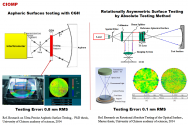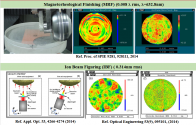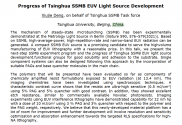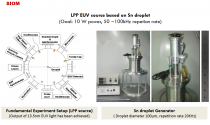From motif ( China military forum), If SMIC is having trouble in acquiring ASML DUVL, why the massive expansion. The OBVIOUS answer, there is NOW a domestic equivalent available.
Despite all odds, SMIC is poised to survive and grow, the company says.
SMIC, China’s largest foundry, has faced extraordinary difficulties in the past 12 months after it got into the U.S. Department of Commerce’s Entity List, which essentially barred the company from developing sub-10nm fabrication technologies and created challenges with obtaining new equipment. Yet in spite of all odds, the foundry remains bullish and plans to triple its production capacity in a few years, the firm said.
"We are planning to triple our capacity for 12-inch wafers in the coming years," said Dr. Haijun Zhao, the company's co-CEO, reports Nikkei.
"Since SMIC was placed on the “Entity List” by the U.S., the company has faced tremendous challenges in production and operations," SMIC's management said in a statement. "Since the beginning of the year, we have focused on the two main priorities of ensuring operation continuity and continuous capacity expansion, realigning the supply chain and finding ways to optimize the procurement process, accelerate supplier qualification, and improve production planning and engineering management."
Based on SMIC’s financial results, the company’s management has succeeded in meeting the foundry’s urgent needs. The company earned $1.415 million revenue in Q3 2021, up a whopping 30.7% year-over-year as well as an increase of 5.3% quarter-over-quarter. The company’s net profits for the quarter reached $321 million, a 25% YoY surge.
Like other foundries, SMIC has probably revised its quotes due to overwhelming demand and an over 100% utilization, but without sufficient (and consistently expanding) production capacities its sales could not have risen by one third year-over-year.
“Operation continuity has been basically stabilized, expansion of mature technology is progressing in an orderly manner and overall as scheduled, and advanced technology business is steadily improving,” the statement from the management reads.
The company is currently run by two co-CEOs: Dr. Haijun Zhao who is responsible for mature nodes and Dr. Mong-Song Liang who is responsible for progressive FinFET-based technologies. Since the company was blacklisted by the U.S. government last year, SMIC cannot do much with its FinFET nodes, yet it continues to invest in further development of its advanced processes (N+1, N+2). Dr. Shang-Yi Chiang (ex-TSMC), who served as vice chairman at SMIC since September 2020 to November 2021, last year proposed to focus R&D efforts on advanced packaging technologies and heterogeneous integration in a bid to serve clients who needed advanced chips. Yet, his departure from the company earlier this month probably means that this plan will be at least put on the backburner.
Without advanced nodes, one of SMIC's ways to grow is to concentrate on mature nodes and hope that one day it will be able to get back to leading-edge nodes. This year SMIC began to build two large 300-mm fabs (including the China's first logic GigaFab) and install additional tools into existing 300-mm fabs that will process wafers using 28nm and thicker process technologies, so it looks like for now it is going to stick to mature process technologies.
At present, the company can process around 120,000 300-mm wafers per month. Once the current expansion plans are complete, the company will be able to process approximately 360,000 300-mm wafers a month. Yet, completing the projects may be tougher than initially anticipated.
The company allocated some $4.3 billion for capital expenditures this year, but in nine months it could only spend $2.4 billion, according to China Renaissance Securities. This indicates that it is not very easy for the company to secure new manufacturing tools, which is perhaps why it prefers not to provide precise dates when its new capacities are set to go online.
The Chinese government wants the country to become self-sufficient in chip manufacturing and since SMIC is without any doubts Chinese semiconductor champion, it plays a crucial role in the government’s plan. But while semiconductor production is hard and capital intensive, chip development requires considerably less resources and there are thousands of chip designers in China that need SMIC's (or someone else's) services. The only problem is that without advanced nodes it will not be able to serve all the customers out there and while demand for all nodes (including mature ones) is very high and will remain high as the world is consuming more chips than ever, it remains to be seen whether reliance only on mature nodes is a good strategy for SMIC.
SMIC Vows to Triple 300-mm Production Capacity Despite U.S. Sanctions
By Anton Shilov about 3 hours agoDespite all odds, SMIC is poised to survive and grow, the company says.
SMIC, China’s largest foundry, has faced extraordinary difficulties in the past 12 months after it got into the U.S. Department of Commerce’s Entity List, which essentially barred the company from developing sub-10nm fabrication technologies and created challenges with obtaining new equipment. Yet in spite of all odds, the foundry remains bullish and plans to triple its production capacity in a few years, the firm said.
"We are planning to triple our capacity for 12-inch wafers in the coming years," said Dr. Haijun Zhao, the company's co-CEO, reports Nikkei.
"Since SMIC was placed on the “Entity List” by the U.S., the company has faced tremendous challenges in production and operations," SMIC's management said in a statement. "Since the beginning of the year, we have focused on the two main priorities of ensuring operation continuity and continuous capacity expansion, realigning the supply chain and finding ways to optimize the procurement process, accelerate supplier qualification, and improve production planning and engineering management."
Based on SMIC’s financial results, the company’s management has succeeded in meeting the foundry’s urgent needs. The company earned $1.415 million revenue in Q3 2021, up a whopping 30.7% year-over-year as well as an increase of 5.3% quarter-over-quarter. The company’s net profits for the quarter reached $321 million, a 25% YoY surge.
Like other foundries, SMIC has probably revised its quotes due to overwhelming demand and an over 100% utilization, but without sufficient (and consistently expanding) production capacities its sales could not have risen by one third year-over-year.
“Operation continuity has been basically stabilized, expansion of mature technology is progressing in an orderly manner and overall as scheduled, and advanced technology business is steadily improving,” the statement from the management reads.
The company is currently run by two co-CEOs: Dr. Haijun Zhao who is responsible for mature nodes and Dr. Mong-Song Liang who is responsible for progressive FinFET-based technologies. Since the company was blacklisted by the U.S. government last year, SMIC cannot do much with its FinFET nodes, yet it continues to invest in further development of its advanced processes (N+1, N+2). Dr. Shang-Yi Chiang (ex-TSMC), who served as vice chairman at SMIC since September 2020 to November 2021, last year proposed to focus R&D efforts on advanced packaging technologies and heterogeneous integration in a bid to serve clients who needed advanced chips. Yet, his departure from the company earlier this month probably means that this plan will be at least put on the backburner.
Without advanced nodes, one of SMIC's ways to grow is to concentrate on mature nodes and hope that one day it will be able to get back to leading-edge nodes. This year SMIC began to build two large 300-mm fabs (including the China's first logic GigaFab) and install additional tools into existing 300-mm fabs that will process wafers using 28nm and thicker process technologies, so it looks like for now it is going to stick to mature process technologies.
At present, the company can process around 120,000 300-mm wafers per month. Once the current expansion plans are complete, the company will be able to process approximately 360,000 300-mm wafers a month. Yet, completing the projects may be tougher than initially anticipated.
The company allocated some $4.3 billion for capital expenditures this year, but in nine months it could only spend $2.4 billion, according to China Renaissance Securities. This indicates that it is not very easy for the company to secure new manufacturing tools, which is perhaps why it prefers not to provide precise dates when its new capacities are set to go online.
The Chinese government wants the country to become self-sufficient in chip manufacturing and since SMIC is without any doubts Chinese semiconductor champion, it plays a crucial role in the government’s plan. But while semiconductor production is hard and capital intensive, chip development requires considerably less resources and there are thousands of chip designers in China that need SMIC's (or someone else's) services. The only problem is that without advanced nodes it will not be able to serve all the customers out there and while demand for all nodes (including mature ones) is very high and will remain high as the world is consuming more chips than ever, it remains to be seen whether reliance only on mature nodes is a good strategy for SMIC.




